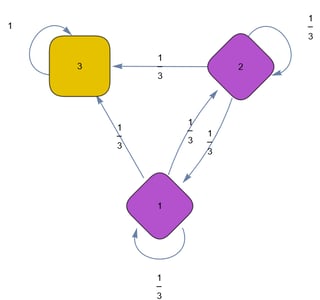You roll a fair die until the cumulative sum rolled so far is a multiple of 3. You get $1 for each roll. What is the expected amount you will get?
I started by finding the probability of the game ending with "i" rolls, P(i). If I have this, I can then find the expectation. P(1), the probability of the game ending in 1 turn is 1/3 as either 3 or 6 can end the game. I continued doing this for P(2), P(3), etc., by writing down the sample space. It was too cumbersome and didn't know if it would end. Is there a more structured way to solve this problem?

